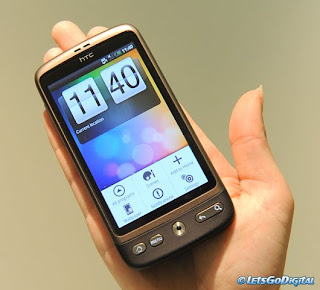HTC are so good they build phones for the competition. HTC are so mean they have no issues competing with their own clients. And is it us or are the clients ultimately left with a rather disturbing question: do HTC work for us or do we work for them? Go ask Sony Ericsson and Google.
It doesn't quite make sense to go as far back as the Sony Ericsson XPERIA X1 and the HTC Touch Pro. Today's story is about another couple of twins. And because the children are nearly identical, we'll try to see what it's like being mom's favorite or dad's.
The Desire produced a good deal of anticipation and its prompt release after this year's MWC proves HTC know good timing. But by no means can it match the hype that surrounded the Google Nexus One. What's in a name? No, really.
And while we're at it, any other - less cheesy - name would've really suited the top HTC Android better. But well, that's minor stuff compared to what's inside. Here it goes.
 Key features:
Key features:Quad-band GSM and dual-band 3G support
7.2 Mbps HSDPA and 2 Mbps HSUPA
3.7" 16M-color capacitive AMOLED touchscreen of WVGA resolution (480x 800 pixel)
Android OS v2.1 with kinetic scrolling and pinch zooming
Slim profile and great build quality
Qualcomm Snapdragon QSD8250 1 GHz processor
576 MB RAM and 512 MB ROM
5 MP autofocus camera with LED flash and geotagging
WVGA (800 x 480 pixels) video recording @ 15fps
Wi-Fi and GPS with A-GPS
microSD slot, bundled with a 4GB card
Accelerometer and proximity sensor
Standard 3.5 mm audio jack
Stereo FM radio with RDS
microUSB port (charging) and stereo Bluetooth v2.1
Optical trackpad which doubles as a button
Smart dialing
Main disadvantages:
Disappointing video quality
Limited storage available to the user on the system partition (you are left with only 120 MB for installing apps)
No DivX and XviD video playback
No voice dialing
Non hot-swappable memory card

